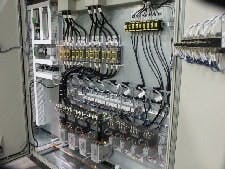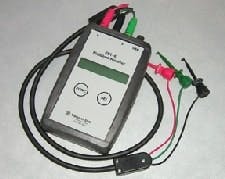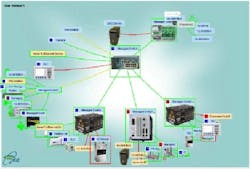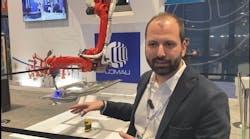Traditional fieldbuses or industrial networks do more these days than send data from instruments or sensors to a controller and back to a control element. Today, more of that data travels to the enterprise network for applications such as asset management, SCM, and ERP.
While traditional fieldbus protocols have proven useful to transport data on the plant floor, giving the same protocols a ride on an Ethernet backbone is a trend that’s probably here to stay.
Most controls professionals involved with industrial networks realize Ethernet is relatively inexpensive, thanks to readily available off-the-shelf (OTS) components, and its physical and transport layers are open and present themselves in a fashion that can be well understood. Ethernet still is working out its problems for control-centric tasks—but they’re not insurmountable.Whether you’re planning a traditional fieldbus network or an Ethernet variant, there are tools, training and critical tips from experienced users available to help you in the design, installation, and troubleshooting/maintenance phases.
Know What It Takes
While learning fieldbus technologies might seem daunting to facility electricians and instrument technicians, the adoption of fieldbus technology, is the cornerstone of a successful implementation,” says William Dolan, PE, principal I&C engineer for Genzyme Corp., a biopharmaceutical producer that uses Foundation fieldbus, Profibus-DP, AS-I, and DeviceNet for its various processes. “The traditional tools alone, which include an instrument screwdriver and a digital volt meter (DVM), will not be sufficient to maintain a fieldbus system. While many of the bus diagnostic tools are resident within the host system, facilities personnel must be trained extensively in each of the buses.”
Four fieldbus types provide a simplified, easier to maintain and troubleshoot installation. Source: Genzyme Corp.
Network designers might be tempted to select the latest technologies for new networks, given the apparent upside, but Doug Taylor, principal engineer at system integrator Concept Systems, Albany, Ore., has a practical suggestion. “Using a mature technology usually results in a higher initial system cost, but can lead to a lower maintenance cost (See Figure 1). The embrace of new technologies often can result in a lower initial system cost at the risk of more exposure to long-term downtime costs because of inadequate training. Designers should gauge the level of the maintenance team’s abilities [and resultant training needs] carefully when selecting communication technologies.”
You think you want to install Ethernet? Make sure you’re properly briefed. “Designing an Ethernet network requires a well-trained understanding of the bandwidth and protocol requirements of the equipment to be networked,” says Bill Persyn, project lead at Polytron, Norcross, Ga., provider of PLC and HMI programming development and other automation services. “Once this has been quantified, the engineer can specify the various switching equipment and media.” For example, switches that support IGMP snooping are a must for EtherNet/IP systems, says Bennet Levine, R&D manager at Contemporary Controls. Throw in VLANs gateways and routers, and you might be ready for a crash course in Ethernet.
That’s really the point. You need to be sure you and your coworkers are properly trained and oriented, even if the project is being handled by a third-party. A day will come when you take ownership.
How to Find the How To
There are resources available to help you better understand industrial networks (See Training and Tools sidebar for more details.). Larry Komarek, Phoenix Contact product manager in automation for the Americas, suggests, for starters, a primer course in Ethernet from a commercial entity such as Cisco, which has several certificates for Ethernet training. Another organization, Building Industry Consulting Service International (BICSI), while mainly focused on building infrastructure, provides various levels of telecommunications training—including cabling, LANs, wireless, and RCDD (Registered Communications Distribution Designer). Komarek points out some other organizations that can help: Foundation fieldbus, ODVA for EtherNet/IP, IAONA, ModbusIDA, and the Profibus Trade Organization.
Lee College in Baytown, Texas, is a major learning center for Foundation fieldbus and Profibus networks. Chuck Carter, principal investigator for NSF projects at Lee College, just had concluded a Foundation fieldbus course when we spoke to him for this article. One of Carter’s major concerns is that the training must reinforce the critical need to take documentation seriously when designing networks.
“Documentation is my pet issue,” he says. “The first things students hear—and they face it throughout the class—is that the whole concept of this technology brings with it a need for excellent document control. You better have a handle on where the wire is, what switch it’s going to, and whether the switch is managed.” Control engineers are not going it alone. Carter has seen an ever-increasing number of IT engineers in attendance, and often finds them excited about applying the principles of control to Ethernets. We suspect some of the control engineers might be learning more about IT than they ever wanted to know.
Train a Trustworthy Installer
Industrial networks—especially at the transport, network, and application layers—certainly are complex, but when installation and maintenance issues crop up, the real problems usually are down at Layer one—the physical layer, which for the most part, concerns basic wiring principles.
Helge Hornis, Pepperl+Fuchs’ intelligent systems manager, says roughly 95% of the service calls P+F receives about the AS-I bus P+F supports are wire-related—not equipment, not software.
“The biggest issue that I’ve seen with industrial networks—especially DeviceNet and ControlNet—is in the media installation, and especially with DeviceNet,” observes Chris Wahl, controls engineer at Stone Technologies, a system integrator based in St. Louis. “The media installation has to be done by an electrician you really trust.” Maybe keeping a couple of well-trained, certified installers in house is a good idea.
Mark Llewellyn, electrical controls engineer, Navistar International, sent a couple of people for Profibus training, and then used them to train the remainder of applicable personnel in his factory.
When fiberoptic media is required, Polytron’s Persyn recommends technicians with specialty certification to terminate fiberoptic connections. Cat5 connections to a patch panel or RJ45 connectors are somewhat simpler but do require special punch down and crimping tools. He typically details the connections on the drawings.
Control Technology Inc. designs and builds factory automation solutions with expertise in high-performance analog and plant-floor communications—specifically Ethernet TCP/IP, Profibus-DP, and DeviceNet. They know training is vital in many areas. “We have two engineers that have attended the PTO ‘Certified Profibus Network Engineer’ training,” says Fred Wilson, applications engineer. “It focuses mainly on installation and debug of Profibus networks. It is useful in developing product specifications and customer support situations, but it is not a requirement for design engineers.” A one-day course discusses protocols, configuration tools, and installation requirements.
“I have been badgering the Fieldbus Foundation and the organizations that test fieldbus devices and issue their “check-marks” to institute certification programs for wiring installers, “ states Maris Graube, president of network testgear provider Relcom. “I believe this would weed out Bubba and Skeeter who have just slapped a magnetic sign on the side of their pickup truck that proclaims them to be wiring installers.”
Simulate
A valuable learning resource is a network certification lab. Phil Lewis, Schneider Telemecanique Automation & Control Services network specialist and field service engineer, says the ability to mock up a factory environment in a certification lab is invaluable training that can save considerable integration time and money. “Such a lab could replicate the loading that would be seen in the target environment and simulate fault conditions so [these] effects can be designed out before deployment,” says Lewis. He adds that the lab also is useful after installation to simulate fault conditions that are seen during operations, and allow engineers to correct the problems.
Many vendors offer labs to do these mock-ups, so it’s a good idea to check with them before setting up an installation you’re still not sure about. In addition, specialized tools may be required for configuration; for example, Wilson uses a Profibus configuration/parameterization tool called COM-Profibus.
Tools Training
Whether it’s troubleshooting a just-installed network, prior to commissioning it, or maintaining a network down the road, there are some basic tools you can’t do without. “The best tool for troubleshooting our network,” says Navistar’s Llewellyn, “is a good solid schematic. All the software and hardware in the world can’t get you any closer to the solution if you have no idea how the network is laid out. For example, Profibus has terminating resistors integral to the terminal connectors. By understanding how these terminating resistors are placed in the network, you can find the problems. Without a good road map, you are just hunting for Easter eggs until you stumble upon the answer.”
Don't even think about installing a network without the proper network testing tools, warns Persyn. “I really like the Rockwell Automation Media Checker,” he adds. “It's simple to use and has the ability to check Ethernet, ControlNet, DeviceNet and DH+.” Invensys fieldbus program product manager, Charlie Piper suggests using segment checkers (See Figure 2) from various vendors to check Foundation fieldbus signal levels and voltages, which are critical to its operation. Komarek says that an Ethernet device’s link light being lit might reveal a physical connection to another device, but it won’t reveal an improperly assigned IP address. Managed switches with built-in web servers can go a long way in revealing what’s going on or not going on there.
“Generally speaking,” says Concept’s Taylor, “the days are gone when you used tools from test and instrumentation companies that were specifically developed for diagnostics. Nowadays, most control application development takes place on PC laptops, and the programming software comes with diagnostics that aid in debugging and tuning the software.”
According to Taylor, Ethernet is, for now, an exception to the above. “In our experience, there are no real good laptop diagnostic programs available yet for Ethernet that allow you to get in the network without affecting the network. Special tools such as those from instrumentation vendors such as Fluke are designed to non-invasively monitor the network.”
Traditional scanning programs such as Ethereal (open-source) or EtherPeek (commercial) require a fair degree of training before using them and getting useful information, and, the general consensus is that they are probably better used by an IT expert.
Brian Singer provides fair warning. “I don’t recommend [these tools] without some serious training behind them,” warns Brian Singer of Rockwell Automation, the chairman of the ISA99 committee. “I’ve seen people crash lots of production processes because they thought they could get away with doing a full network scan using these tools.”
Other commercial tools are becoming available that can help plant and IT engineers. According to Komarek, network management software knows what devices are present on the network and which are missing, and it presents pictorial information (See Figure 3). Engineers can use network management software to set the IP addresses, determine network status, and configure each device. Network management software is never required, but as networks get bigger and bigger, the software makes it much easier to maintain the network.
FIGURE 3: VISUAL NETWORK ANALYSISThis network software pictorially identifies industrial Ethernet nodes and paths. It reveals duplicated IP addresses, cable faults, broadcast storms, device lock-ups, and more. Source: NetworkVision (Click image to enlarge)
Training for Troubleshooting and Maintenance
System integrators are a good source of training for troubleshooting and maintenance. But the level of training depends on the user. “We go into plants where the customer has no internal electrical programming capability,” says Wahl. “In that case, he’ll be looking for us to provide a flexible solution that doesn’t have to be changed in the future.” On the other hand, he says, if they have some maintenance electricians who are relatively savvy, they want to be sufficiently trained to own the solution.
“DeviceNet and ControlNet solutions will be more challenging than the Ethernet solution, so they will need more training on the non-Ethernet networks,” concludes Wahl. “You have to think like a PLC engineer. But, I think EtherNet/IP is a good entry-level network. It will cover most applications and do it more economically.” There are applications that will need a non-Ethernet solution, for example 40 or 50 VFD drives. That, according to Wahl, is a perfect DeviceNet application.
“If you’re dealing with issues like security, downtime or critical expansions, too much is at risk to not bring in someone with a specialization in the area,” counsels Schneider’s Lewis.
Form a Study Group
If it’s an Ethernet-based fieldbus and sharing plant data is important to the enterprise, then help might be as close as the IT department. Levine suggests that integration should be done by the IT department and the control department. Both departments should have questions for the other department.
This level of cross-training raises vital awareness of the issues on both sides of the firewall.IT should be made aware that the control network might be sensitive to heavy traffic loads (broadcast storms, etc.). Discuss using VLANs. Ask what type of data that will pass between the two networks. Determine the type of access to the controls network provided to personnel in the IT group. Will everyone be able to access the control network? Discuss the type of access to the IT network provided to control network devices and personnel. Discuss all potential connections to the Internet. Do any control devices require a hole punched in the firewall so that it can be remotely accessed via the Internet?
Cross-pollination training matters—from the beginning of the project. “For the migration to the new control scheme, we meet bi-weekly to iron out lines of demarcation, and overall network architecture, says Navistar’s Llewellyn. “This is probably the best, most productive time I have spent in a meeting. It pays to have your IT department and your engineering staff understanding the needs and concerns of each other to make sure you don’t start down a path that ultimately has to be abandoned. Left purely up to one group or the other, the results would have been disastrous, but by meeting in the middle, before the infrastructure is ordered, we have been able to head off a large portion of the issues without spending any money.”
Training & Tools
This list is a starting place to find network training services and tools. It is by no means complete, since many companies offer products or services in all three categories.
Training
- AS-Interface
- Chemical Industry Data Exchange
- Cisco Systems
- EthernetTraining.com
- Fieldbus Center
- Foundation Fieldbus
- IAONA
- Idaho National Labs
- Industrial Ethernet University
- Industrial Networking Solutions
- IEEE
- ISA
- Modbus-IDA
- Nortel
- ODVA/EtherNet/IP
- Profibus
- Profinet Competence Center at Phoenix Contact
- Siemens
Tools:
- Fluke Networks handheld tools
- Ethereal network protocol analyzer
- EtherPeek commercial network protocol analyzer
- Frontline industrial network protocol analyzer
- Network Vision IntraVue network analysis software
- Relcom Inc. handheld testers, power conditioners
- Pepperl+Fuchs (AS-I testers/software)
- Emerson Process (HART and Foundation fieldbus testers)
- Rockwell Automation (testers and software)
- Trebing & Himstedt (Profibus analyzers)
Sponsored Recommendations

Leaders relevant to this article:







